Outer Space & Universe
Outer Space & Universe
Space, also known as outer space, is the near-vacuum between celestial bodies. It is where everything (all of the planets, stars, galaxies and other objects) is found.
On Earth, space begins at the Kármán line (100 km above sea level). This is where Earth's atmosphere is said to stop and outer space begins. This is not a firm boundary but is a convention used by scientists and diplomats.
Items in space are free to move back and forth; up and down; and left and right. These three dimensions are what make 3D space. Items also move forward through time, which is sometimes called the fourth dimension.
The majority of space contains very little matter and so most of it is a vacuum. Scientists do not know how big space is but we do know that space is extremely big, and is always expanding.
According to the big bang theory, all matter and energy in the Universe was compressed into a very small space. Then it exploded and started expanding. Space is still growing in size today; this means the distance from one galaxy to distant galaxies is getting longer.
Gravity is the force that keeps the Moon in orbit around the Earth and the planets in orbit around the Sun. Gravity can stretch and bend space similar to how a heavy ball placed on a stretched sheet of rubber will cause the rubber to stretch. The scientist who discovered that space can bend is named Albert Einstein. How gravity bends space is part of his theory of general relativity.
Astronauts, Cosmonauts, Taikonauts and Spationauts
An astronaut is any person who is trained by NASA to travel and perform tasks in space. Although the space traveler may not necessarily be a United States citizen, each astronaut does go through a rigorous training regiment by the National Aeronautics and Space Administration. Other space travelers go by other names then astronaut depending on their country of origin.
In the United States, astronaut is derived from the Greek words ástron (star) and nautis (sailor). While, in Russia, a space traveler goes by the name космонавт (English: cosmonaut), which is derived from the Greek words kosmos (universe) and nautis (sailor). Westerners call a space traveler from China a taikonaut, based on the 1998 writings of Chiew Lee Yik and Chen Lan where the term tàikōng (great emptiness), Chinese for “space”. In China, the term yuháng yuán (universe navigator) is used for space traveler.
Only the United States of America (United States), Russia (earlier, the Union of Soviet Socialist Republics), and the People’s Republic of China (China) have sent manned spacecraft into space. Other countries have assisted these countries by sending their own space travelers on space missions. For instance, a French space traveler is called a spationaut (from the French word spationaute), which is derived from the Latin spatium (space) and Greek nautis (sailor). (plural in Greek nautes = sailors)
-
05:11
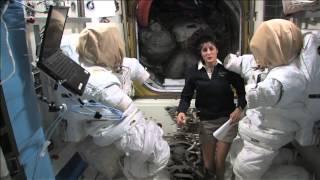
ISS Tour: Labs, Exercise Bike&Space Suits | Video
Added 813 Views / 0 LikesExpedition 33 commander Suni Williams showcases the Japanese, American and European laboratories are toured. Also a look at the station's space suits. Destiny, Columbus and Kibo nodes are toured.
-
02:27
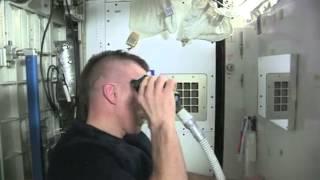
How To Shave Your Head In Space | Video
Added 780 Views / 0 LikesAstronaut Chris Cassidy shaved his head while on the International Space Station to welcome his new crewmate Luca Parmitano.
-
02:42
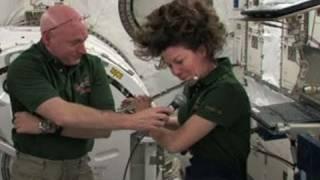
Astronaut Plays Flute on Space Station
Added 829 Views / 0 LikesFlight Engineer Cady Coleman demonstrates playing a flute on the International Space Station during an interview with National Public Radio's "All Things Considered." Credit: NASA/NPR
-
01:54

Astronauts Drink Urine and Other Waste Water | Video
Added 921 Views / 0 LikesISS commander Chris Hadfield explains how astronauts stay hydrated and why Space Station must try to recycle everything. -- Life in Space: Astronaut Chris Hadfield's Video Guide: http://goo.gl/fdgcgU
-
01:46

How To Wash Your Hands In Space | Video
Added 836 Views / 0 LikesISS Commander Chris Hadfield shows us the fine points of manual digital hygiene in microgravity. A clean-handed astronaut is a happy astronaut. -- Life in Space: Astronaut Chris Hadfield's Video Guide: http://goo.gl/fdgcgU
-
01:48
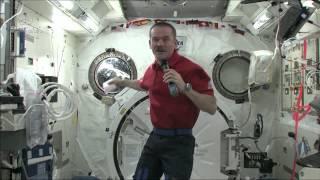
How To Barf, Puke, Vomit In Space | Video
Added 893 Views / 0 LikesHow do you upchuck if there is no up or down? ISS commander Chris Hadfield explains what astronauts do if they have to vomit. -- Life in Space: Astronaut Chris Hadfield's Video Guide: http://goo.gl/fdgcgU
-
08:42

ISS Tour: Kitchen, Bedrooms&The Latrine | Video
Added 774 Views / 0 LikesExpedition 33 commander Suni Williams showcase the sleeping accomodations, how the bathroom is utilized, brushing teeth in microgravity and the common room with food. Harmony, Tranquility and Unity are the nodes toured.
-
03:12
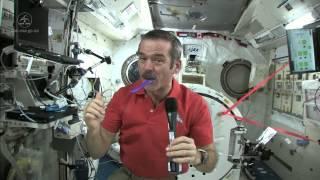
How To Brush Your Teeth In Space | Video
Added 636 Views / 0 LikesISS commander Chris Hadfield explains how astronauts maintains oral hygiene aboard the International Space Station. -- Life in Space: Astronaut Chris Hadfield's Video Guide: http://goo.gl/fdgcgU
-
06:01
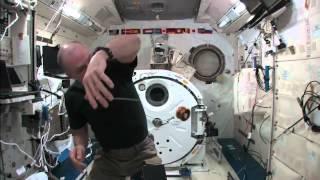
Yo-Yo Tricks In Space - Astronauts Tests His Skills | Video
Added 767 Views / 0 LikesFun with Physics! NASA astronaut Don Pettit enjoyed some of his off-duty time showcasing yo-yo behavior in microgravity aboard the International Space Station. Read more from Don Pettit http://goo.gl/FKrO8
-
02:44

How Do You Sleep In Space? | Video
Added 836 Views / 0 LikesISS commander Chris Hadfield shows how astronauts catch their Z's in Space. -- Life in Space: Astronaut Chris Hadfield's Video Guide: http://goo.gl/fdgcgU
-
01:25
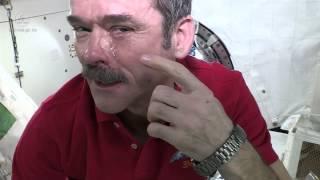
Can You Cry In Space? | Video
Added 625 Views / 0 LikesISS commander Chris Hadfield demonstrates what happens to tears if they start 'falling' in Space. -- Life in Space: Astronaut Chris Hadfield's Video Guide: http://goo.gl/fdgcgU
-
03:18
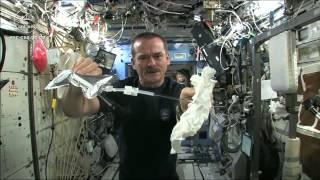
Wet Washcloth In Space - What Happens When You Wring It? | Video
Added 641 Views / 0 LikesInternational Space Station commander Chris Hadfield soaks a washcloth, gives it a twist, and...well, you'll see. -- Life in Space: Astronaut Chris Hadfield's Video Guide: http://goo.gl/fdgcgU
-
02:58
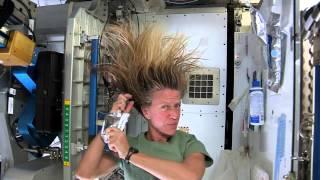
Astronaut Tips: How to Wash Your Hair in Space | Video
Added 815 Views / 0 LikesNASA astronaut Karen Nyberg shows how she washes her long hair in space while living in weightlessness on the International Space Station. Hint: No rinse shampoo is a must. Read more about it here: http://goo.gl/qlb8YT Credit: NASA
-
01:21
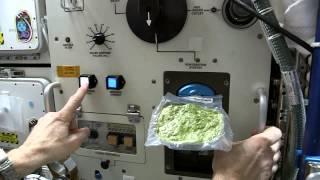
How to Cook Spinach In Space | Video
Added 735 Views / 0 LikesCanadian astronaut and ISS Commander Chris Hadfield shows how vacuum sealed dehydrated spinach is prepared to eat aboard the International Space Station. -- Life in Space: Astronaut Chris Hadfield's Video Guide: http://goo.gl/fdgcgU
-
03:03
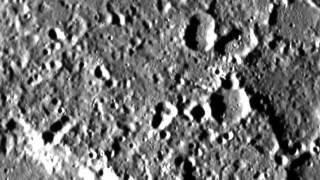
Barren, Blasted Mercury Revealed In New Fly Over | Time Lapse
Added 869 Views / 0 LikesOn 4 October 2013, NASA acquired 560+ images from the MESSENGER spacecraft orbiting Mercury. Hundreds of miles of scorched, asteroid impacted surface have been compiled and set to the 'HI-FI SCI-FI' sounds of Atom Strange. Credit: NASA/Johns Hopkins Unive
-
02:13
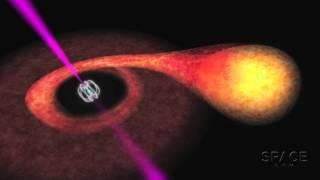
X-Ray Pulsar Pair Caught Morphing | Video
Added 792 Views / 0 LikesIt's like watching siblings tussle: Astronomers have finally witnessed a long-sought example of pulsar evolution. Designated PSR J1824-2452I, this X-ray Binary is being spun up to millisecond speeds by a tiny companion, 1/5th the Sun's mass. Read more abo
-
00:50

Massive X-Flare Tops Sun's Active Week
Added 840 Views / 0 LikesThe same sunspot to unleash a M.9 flare just a few days ago erupted again with the strongest of flares, X type, on January 27, 2012. Fortunately, the Earth was spared the full brunt of the solar shockwave, but a radiation storm may still be imminent.
-
01:14
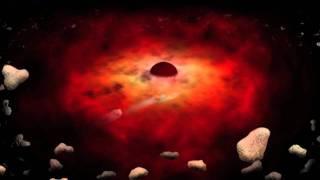
Galactic Black Hole Eats Asteroids For Breakfast -- Really
Added 843 Views / 0 LikesX-Ray flares recorded by the Chandra Observatory suggest asteroids and comets are being violently torn apart by the super-massive black hole at the center of the Milky Way Galaxy.
-
03:46

Lego Space Shuttle Soars To Edge of Space | Video
Added 950 Views / 0 LikesRaul Oaida launched the Lego model 3367 attached to a helium balloon from central Germany and it reached a maximum altitude of nearly 115,000 Feet. For more about Raul go to http://www.youtube.com/watch?v=bluQ4eOeBwo .
-
00:49

Comet's Tail Ripped Off By Sun's Fury
Added 915 Views / 0 LikesNASA's STEREO A satellite captured Comet Encke's tail being torn off by a coronal mass ejection in 2007. Magnetic field interactions are thought to be the culprit behind the comet losing its tail. Credit: NASA / Music: Atom Strange www.atomstrange.com
